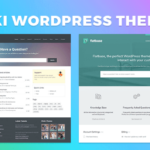Back-end development is the unsung hero of the digital world, the engine behind the websites and applications we rely on daily. It’s the realm of coding that ensures your favorite apps run smoothly, data is securely stored, and transactions happen seamlessly. As technology continually evolves, so does the landscape of back-end development. In 2023, we’re witnessing an exciting array of emerging trends that are reshaping the field, making it more scalable, resilient, and efficient than ever before. In this article, we’ll explore the top back-end development trends of 2023 and how they’re shaping the industry. Additionally, we’ll delve into how .NET development companies can leverage these trends to craft superior back-end solutions for their clients.
Cloud Computing: Soaring to New Heights
Cloud computing has firmly established itself as a game-changer in back-end development. Services like Amazon Web Services (AWS), Microsoft Azure, and Google Cloud Platform (GCP) offer a treasure trove of resources for building and deploying back-end applications. Here’s why cloud computing is a hot trend in 2023:
- Scalability: Cloud platforms are remarkably elastic, capable of expanding or contracting resources on-demand. This scalability is a blessing for back-end developers dealing with fluctuating workloads.
- Reliability: Cloud providers offer impressive uptime guarantees, ensuring your application remains accessible even in the face of infrastructure hiccups. Say goodbye to dreaded downtimes.
Serverless Computing: Unleashing Agility
Serverless computing is a revolutionary trend within the broader cloud computing landscape. It liberates back-end developers from the hassle of server management, ushering in a new era of efficiency:
- Reduced Operational Overhead: With serverless computing, there’s no need to babysit servers. This liberates developers to focus on crafting exceptional applications rather than wrestling with infrastructure.
- Increased Agility: Serverless architectures simplify deployment and scaling, allowing developers to adapt swiftly to shifting business requirements. It’s all about staying agile in the fast-paced digital world.
Containerization: The Magic of Isolation
Containerization is the tech wizardry that allows back-end developers to package applications into isolated units known as containers. These containers can be deployed to any environment supporting them, making application management a breeze:
- Portability: Containers are environment-agnostic. They can effortlessly transition between different environments, from development to testing and production.
- Scalability: Containers can be scaled up or down to match the application’s demands. It’s a flexible approach that ensures your system can handle whatever comes its way.
AI and ML: The Smart Revolution
Artificial Intelligence (AI) and Machine Learning (ML) are no longer confined to the realms of sci-fi; they’re increasingly integral to back-end development. These technologies are enhancing performance, security, and scalability:
- Fraud Detection: AI and ML can develop robust fraud detection systems, helping protect your application and users from malicious activities.
- Personalization: Recommendation systems powered by AI can analyze user behavior and suggest personalized content or products, enhancing user engagement.
- Infrastructure Optimization: AI and ML can optimize back-end infrastructure, ensuring resources are allocated efficiently and reducing wastage.
- Task Automation: Repetitive tasks can be automated, freeing up valuable human resources for more creative and strategic work.
.NET Development and Emerging Trends
.NET, a widely embraced platform for back-end development, has an essential role to play in adopting emerging trends. Let’s explore how .NET development company can harness these trends to create better back-end applications:
- Leveraging Cloud Computing: .NET development companies can utilize cloud platforms to build and deploy scalable, reliable, and cost-effective back-end solutions. It ensures your applications remain agile and capable of handling surges in demand.
- Embracing Serverless: Adopting serverless computing can reduce operational overhead for .NET developers, allowing them to focus on coding excellence. This newfound agility can significantly benefit clients by enabling quicker development cycles and cost-effective solutions.
- Containerization with .NET: Containerization, paired with .NET technologies like Docker and Kubernetes, can empower .NET development companies to build portable and scalable back-end services. The versatility of containers ensures seamless transitions between different environments, reducing deployment headaches.
- AI and ML in .NET: .NET offers powerful tools for integrating AI and ML into back-end applications. .NET developers can harness frameworks like TensorFlow and CNTK to build intelligent systems that enhance application performance, security, and user experience.
Conclusion
In conclusion, back-end development in 2023 is marked by exciting trends that are revolutionizing the industry. Cloud computing, serverless architectures, containerization, and the integration of AI and ML are reshaping the way we approach back-end development. For .NET development companies, embracing these trends is crucial to staying competitive and delivering top-notch back-end solutions to their clients. As technology continues to evolve, the back-end developers of 2023 are well-equipped to create faster, more reliable, and more secure applications than ever before.








